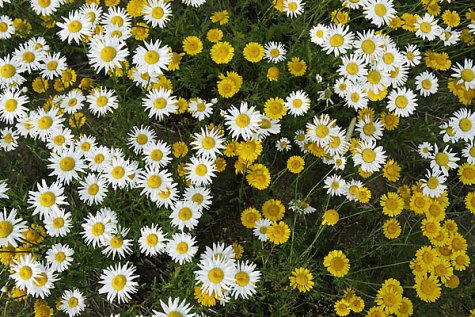Yellow chamomile in the landscape
Photo: Arne Ader
Translation: Liis
Ox-eye daisies and yellow chamomile
Yellow chamomile Kollane karikakar Anthemis tinctoria
What is colloquially called the flower of the yellow chamomile is botanically a capitulum or composite inflorescence. The capitulas consist of two types of flowers (or florets): in the centre are the yellow disc florets, surrounded by the longer, flat ray florets. It is a perennial herb, with strong and hairy stem, and leaves that remind a little of the leaves of the milfoil or yarrow (Achillea millefolium).
The yellow chamomile is a synanthrope which we rarely find in untouched nature, always rather in the traces of human activities – roadsides, gravel pits, fallow land, as a weed in fields ... The seeds of the plant need open soil surface for germination, because they cannot tolerate competition from other densely growing plants.
It is believed that the yellow chamomile arrived in Estonia from the south together with the cultivation of grain, but this happened already centuries ago, and thus it is not regarded as an invasive species.









